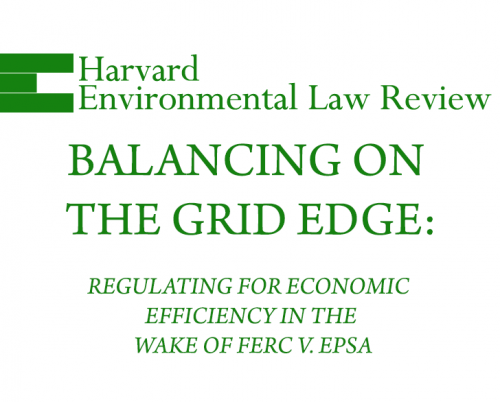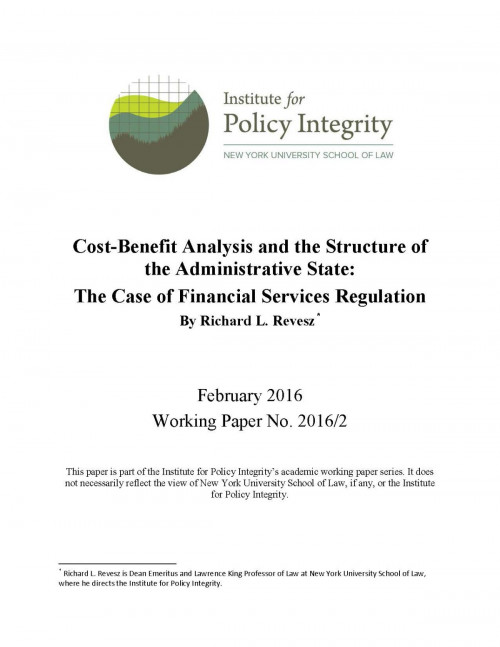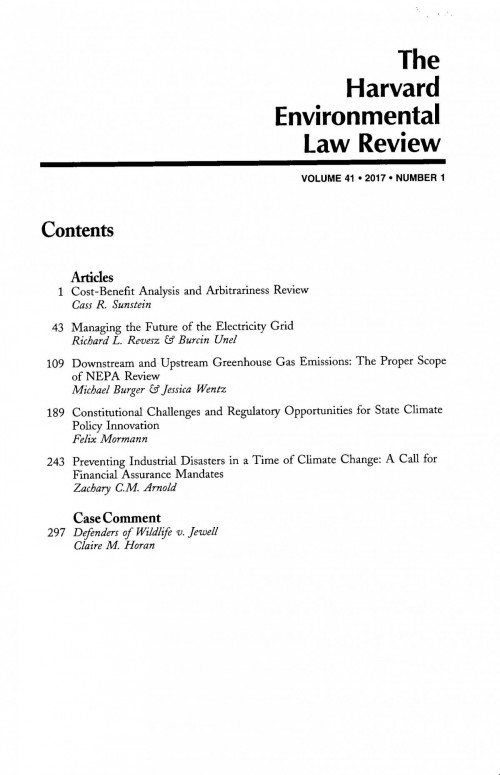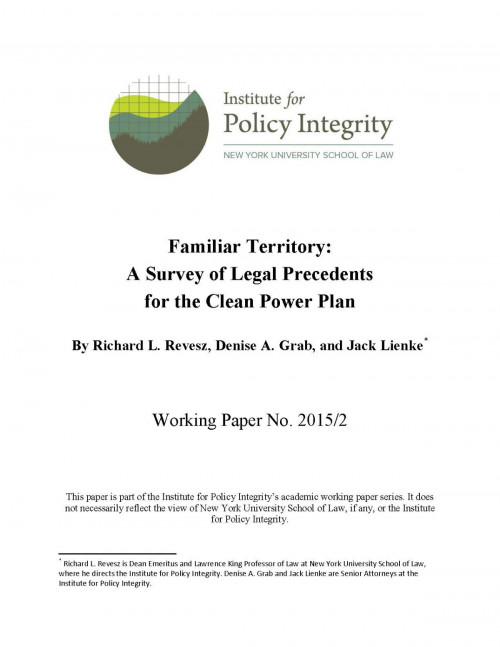-
The Turn Toward Toxins
An Essay Review
A growing number of historians have begun to turn their attention to crucial transitions in the ‘chemical age’ of the 20th century in order to understand both how ‘invisible’ chemicals endangered the environment and public health as well as how science and technology mediated perceptions of this danger. Several important new works have demonstrated the need for scholarship not only on the environmental and health effects of pollutants, but also on how institutions and governments began to care about such changes and define them positively or negatively.
-

Balancing on the Grid Edge
Regulating for Economic Efficiency in the Wake of FERC v. EPSA
This new article from senior attorney Denise Grab is featured in a special edition of the Harvard Environmental Law Journal that focuses on the Supreme Court’s FERC v. EPSA case.
-

Cost-Benefit Analysis and the Structure of the Administrative State
The Case of Financial Services
The viability and desirability of conducting cost-benefit analysis of financial regulation is a subject of intense academic debate. Opponents claim that such analysis is feasible for environmental regulation but not for financial regulation because of the difference in the benefits that require monetization in the respective areas. This article, which will be published in a forthcoming edition of the Yale Journal on Regulation, argues that the recent debate misses an important part of the problem. In large part, cost-benefit analysis of financial regulation cannot currently be performed successfully because of institutional shortcomings, not analytical difficulties. Compared to Executive Branch agencies, independent agencies, like the major financial regulatory agencies, lack the capacity to do cost-benefit analyses of acceptable quality. Fortunately, there are good Executive Branch models that could be exported to the financial regulatory agencies.
-

Managing the Future of the Electricity Grid: Distributed Generation and Net Metering
As distributed energy generation is becoming increasingly common, the debate on how a utility’s customers should be compensated for the excess energy they sell back to the grid is intensifying. This article provides a thorough analysis of the benefits and the costs of distributed generation and highlights the analytical flaws and missing elements in the competing positions and in all the existing policies.
-

Familiar Territory
A Survey of Legal Precedents for the Clean Power Plan
In this essay, we highlight a wide variety of regulations from the Clean Air Act’s forty-five-year history that provide substantial precedent for the flexible design of the Clean Power Plan.
Viewing all publications in Academic Articles/Working Papers
